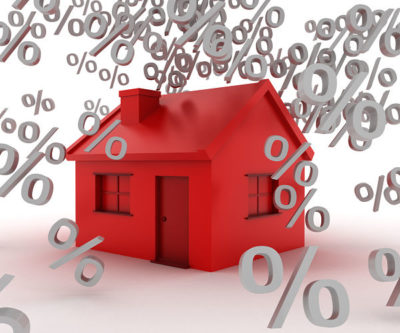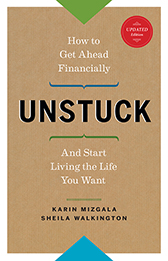By Barbara Knoblach, Ph.D., CFP®
 The mortgage game is a complicated one where the rules change often. Canadian mortgage borrowers can be placed into one of two camps – the ‘variable rate’ or ‘fixed rate’ camp.
The mortgage game is a complicated one where the rules change often. Canadian mortgage borrowers can be placed into one of two camps – the ‘variable rate’ or ‘fixed rate’ camp.
Variable rate borrowers are those that are willing to ride changes in the interest rate and like the flexibility of these products. Fixed rate borrowers, on the other hand, like the certainty that their payments will not change over the term of their mortgage.
Both approaches are sound, but both can also force borrowers to deal with rising interest rates at some point. This is especially true in the current mortgage market.
Why? Interest dipped to a historic low between 2014 and 2017, hanging around 2.3 percent for variable rate mortgages and 3.3 percent for fixed-rate loans. Although these low rates were fun while they lasted, a market correction back toward the usual 5 percent rate was inevitable and is currently ongoing.
The Bank of Canada sets the overnight lending rate which the banks use to help determine mortgage rates. The overnight rate, recently maintained at 1.75 percent, is expected to increase in the future and pull mortgage rates upwards. TD Bank, for example, is offering a prime rate of 4.1 percent on its mortgages.
Canadians currently looking to secure a mortgage, or those that are already locked into a mortgage and have a renewal coming up at some point, must understand how their mortgage works and how best to handle rising interest rates.
A Tale of Two Borrowers
The best way to understand how rising interest rates affect both fixed and variable rate mortgages is to look at real examples.
Let’s consider two different clients of Money Coaches Canada, Adam and Betty. Both bought homes in April of 2017. To avoid CMHC insurance, both put 20 percent down on their homes and borrowed around $400,000. Each of them opted for a 30-year amortization of their mortgage. This is where the similarities end, however.
Adam opted for a variable rate mortgage and Betty for a fixed. Both will have to overcome an increase in their interest rates even though they will feel the impact of the increase in different ways.
| Adam | Betty | |
| Initial mortgage balance | $406,000 | $406,000 |
| Initial interest rate payable on mortgage | 2.3% | 3.3% |
| Current interest rate payable on mortgage | 3.55% | 3.3% |
| Regular monthly payment | $1,560 | $1,775 |
| Lump-sum prepayments | $27,000 | $0 |
| Amortization time remaining, according to online statement | 34 years | 28.5 years |
| Interest paid to date | $17,413 | $19,679 |
| Remaining balance after 18 months into mortgage term | $366,580 | $393,763 |
*The information above represents estimates, not actual mortgage amortization calculations. Work with a financial planner to confirm the specifics of your mortgage amortization.
Adam’s Story
Adam took out a variable rate mortgage with a five-year term. He did so because of the loan’s attractive 2.3 percent rate of interest. His loan also allowed him to make extra mortgage payments when his budget permitted. He is now 1.5 years into his loan and has made almost $30,000 in extra mortgage payments.
Unfortunately, Adam’s interest rate has incrementally gone up by a little more than a percentage point. Although his monthly payments remain the same, the higher interest rate has already added more than four years to the life of his loan. While his initial mortgage amortization was 30 years, it will now take him 34 years to pay off the mortgage, according to the bank statement. This in spite of him having made payments on the mortgage for 18 months already.
This happens because more of his regular monthly mortgage payments are now applied to interest rather than to principal.
For now, Adam is unhappy that he is not on track to pay off the mortgage as planned, but is relieved that he can still comfortably afford his monthly mortgage payment. If, however, the interest rate jumps to 4.6 percent or higher, his monthly payments will increase during the term of the initial 5-year mortgage.
Betty’s Story
After hearing about her friend Adam’s situation, Betty is feeling a bit smug. She opted for a mortgage with a fixed interest rate of 3.3 percent. She is also 1.5 years into her loan. Her mortgage rate remains the same and, according to the online mortgage statement, she is on track to have her mortgage paid in 28 years. But can she really pay off her mortgage before Adam does, and do so without making the extra payments to the principal that Adam made?
Although Betty is feeling pretty pleased right now, she will likely be in for an unpleasant surprise when it’s time to renew her mortgage at the five-year mark. The rates for five-year fixed rate mortgages correlate with Government of Canada bond yields. If the interest rate keeps going up as currently projected, Betty may have to renew her mortgage at a rate of around 5.5 percent. In such a scenario, her monthly mortgage payment would increase by more than $500, going from $1,775 a month to $2,290 a month.
Betty may have the option of bringing her monthly mortgage payments down by extending the length of her mortgage. This usually requires a brand-new mortgage and mortgage application. This may make Betty leery since a borrower typically prefers to pay out a mortgage in full before retirement. Another concern with a new mortgage application is that Betty will have to qualify at the new rate at the time of application.
Coping with Change
Clearly, both Adam and Betty struggle with the rising interest rate in spite of their different approaches to borrowing. Fortunately, there are steps one can take to make an increase in mortgage rates manageable, whether you’re like Adam or Betty.
The first step is to simply keep an eye on the total length of your mortgage amortization. If you can, make advanced payments to shorten the length of amortization. Try, for example, to cut your timeline to 28 years. That way, if an increase in your interest rate adds four years to your mortgage, you can still pay it off in 32 years rather than 34.
Advanced mortgage payments offer other advantages as well. One is that it reduces the amount of principal you owe. When the mortgage comes up for renewal, your lender will recalculate your loan payments based on the current principal amount outstanding. The less you owe, the less an increase in interest will affect your monthly payments.
Also, keep in mind that when making lump sum prepayments, the mortgage might be paid off sooner than shown on the online statement. Because the bank calculates the remaining amortization according to the regular payment schedule, but not according to prepayments (which are not known to the bank in advance), the bank’s statement may not be a good predictor of the actual time it will take to pay the mortgage in full. To keep with the example above, Adam is currently on track to pay off the mortgage much faster than Betty. It just does not show on the online bank statement!
If you know an increase in your monthly payment is simply unavoidable, start paying more on your mortgage every month now. If you can budget for a higher payment now, the adjustment will hurt less when your monthly payment does increase. This gives you time to rework your budget and get yourself situated while you still have wiggle room.
When juggling your budget to prepare for a mortgage increase, look at all your debt. If you owe on high-interest credit cards or a car loan, consider paying these debts off as soon as possible. Once you’ve paid these debts off, you can take the money you were putting towards them and redirect it to your higher mortgage payment. Set the time of mortgage renewal as a final deadline by which these changes will have to be implemented.
Take a hard look at your discretionary spending, as well. You may need to start packing your lunch or give up a few luxuries to afford your higher mortgage payment. Make these budget cuts before you need to so that your plan is ready and practiced when your mortgage payment does go up.
Unfortunately, you may need to make the hard call to sell your home. If you know that affording a higher mortgage payment is simply not possible, the best course of action may be to sell the home now, before you get into financial trouble.
However, don’t let temporary feelings of frustration or hopelessness force you into making this decision on a whim. Before taking any drastic measures, talk with a Money Coach. We help people solve financial challenges every day, and we would welcome the opportunity to work with you. We will help you get on the right track to financial peace of mind and may be able to help you keep your house in the process.
Call us today and explore all your options.



“The Bank of Canada has set the current prime lending rate at 3.95 percent and is expected to increase it in the foreseeable future.”
The BOC does NOT set prime lending rate. Banks do. They set the OVERNIGHT lending rate for banks. And all banks don’t have prime at 3.95%. TD has two prime rates – one for LOCs and one for mortgages. Your statement, while correct in the concept of rising rates, is factually inaccurate.
Hi Paul,
Thanks for taking the time to comment on our blog post. You are, of course, 100% correct. We’ve updated the post accordingly.
It’s readers like you that keep us on our toes, and help us educate and inform Canadians everyday. Thanks again.
In times of rising interest rates, it’s better to pay your mortgage rates as little as possible, because when the rate starts to decline, you can pay more mortgage then. I know this seems like a shady tactic, but it will save you money.